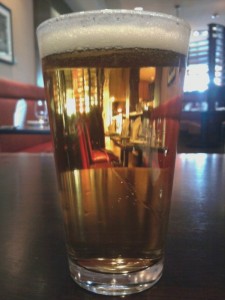In 1919, congress passed the 18th constitutional amendment, making the sale, manufacture, and transportation of alcohol for consumption illegal. This dark time in American history was called prohibition. During this time, the illegal production and distribution of alcohol became rampant, because the government had no means to enforce the act. In 1933, the ratification of the 21st amendment repealed the 18th amendment, allowing alcohol to become legal again.
After prohibition, control of alcohol laws was granted to the states. This is when Iowa law 123.3 was written, along with many others like it.
The main issue with this law is the definition of beer: “Beer” means any liquid capable of being used for beverage purposes made by the fermentation of an infusion in potable water of barley, malt, and hops, with or without unmalted grains or decorticated and degerminated grains or made by the fermentation of or by distillation of the fermented products of fruit, fruit extracts, or other agricultural products, containing more than one-half of one percent of alcohol by volume but not more than five percent of alcohol by weight but not including mixed drinks or cocktails mixed on the premises. (I have emphasized the important part).
What this means to the average beer drinker is that any beer over 5% ABW (~6.2% ABV) is no longer considered beer, but is then considered a liquor. Once it is considered a liquor, it no longer is distributed by the local distributors, and instead is distributed by the government-run Iowa Alcohol Beverages Division (IABD) in Ankeny, Iowa. This becomes a large issue because, even though beer can be perishable, and may need to be refrigerated, because it is considered a liquor, it is not handled properly. This is one reason several brewers, such as Founders Brewing and some Bell’s Brewery products, stay out of Iowa distribution. This law also prohibits local breweries and brewpubs to create any beer over this percentage, making much more difficult to compete with out-of-state breweries, who can be distributed through the IABD.
In recent years, because of the growth of Craft Beer in the US, many of these laws have been changed to increase the definition of “beer” to be up to 12% to 18%, but Iowa has not changed this law. There had been a grassroots movement several years ago to raise this limit, and liftthelimit.org was created. This encouraged others to speak out about the law. Because of movements like these, and the growing acceptance of craft brewing, in early 2010, SF 2091 was written, which would raise the allowable value to 12% ABW (15% ABV), and would create a separate license for higher-alcohol beers to be brewed in Iowa. This legislation was then rolled into SF 2088, an Iowa government reorganization bill (don’t try and read the whole thing- it may may you dizzy).
So, as it stands, the reorganization bill, as amended, has passed the Iowa Senate, and has been messaged to the House, where it is close to making this archaic law become a thing of the past. I say, good riddance!
For more information, you can read up on US prohibition and beer in the US. There’s also a pretty neat timeline at beerhistory.com.
What do you think? Will this be a beer renaissance for Iowa?
